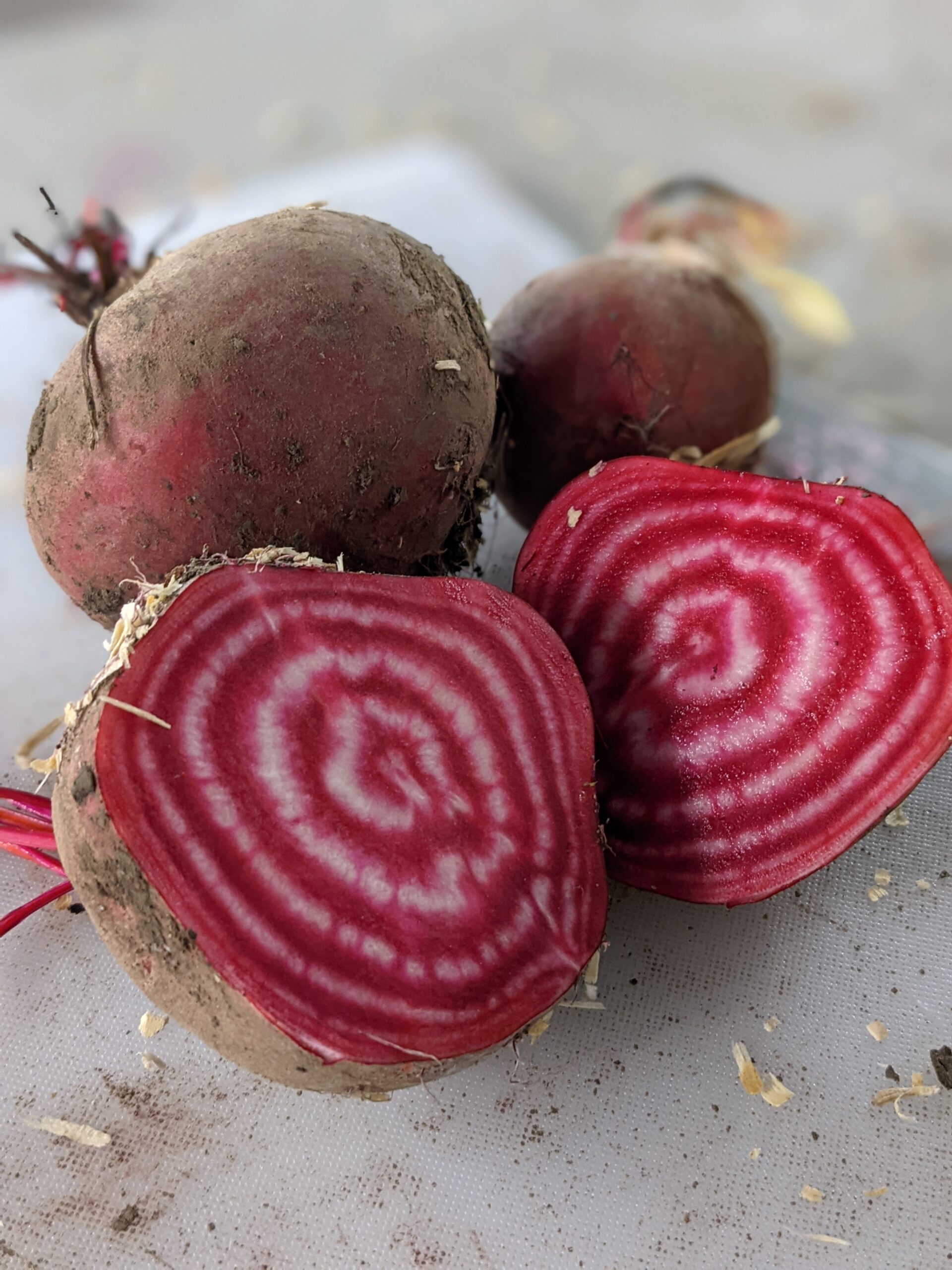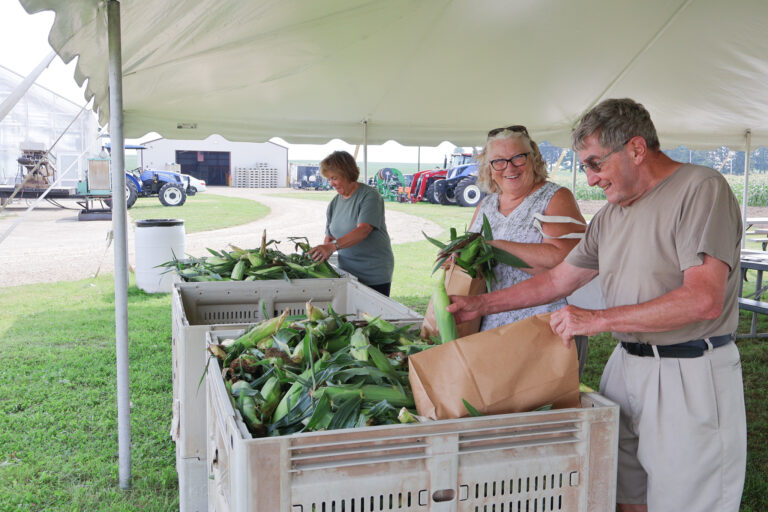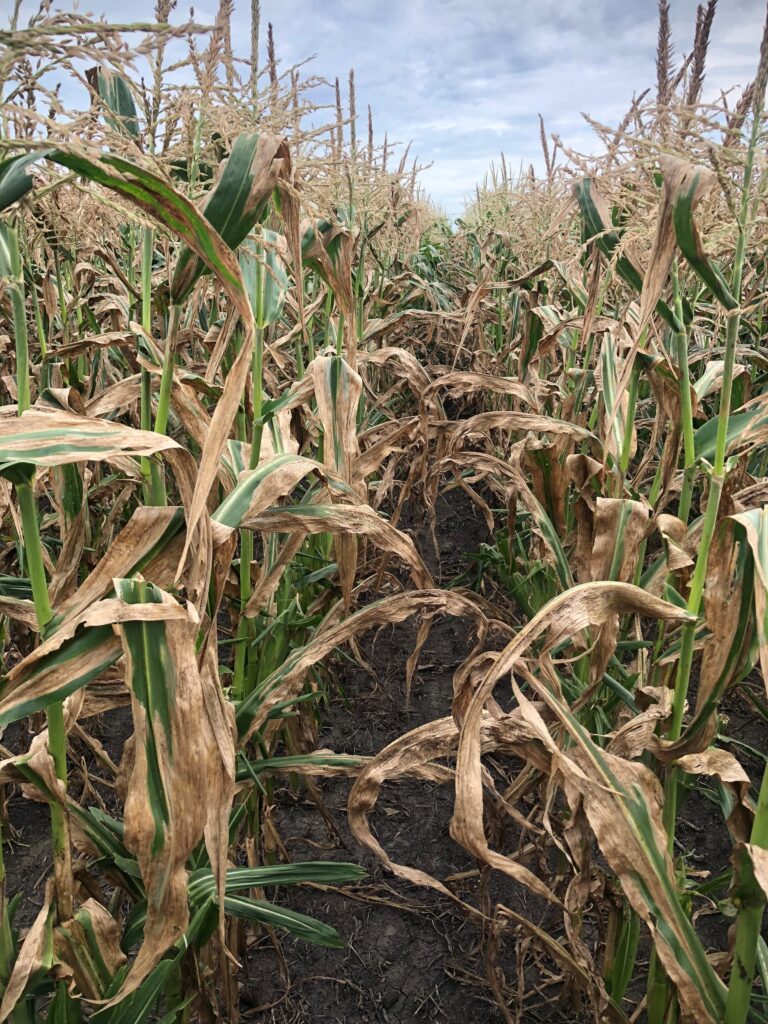
The Fascinating World of Beet Rings
Have you ever cut open a beet and noticed a colorful pattern? Whether you appreciate the variety in color or prefer a completely uniform profile, there’s an interesting explanation for why we find concentric rings or other patterns inside our beetroots.
Like many of the plants around us, beets have an intricate vascular system made up of xylem and phloem. The vasculature is responsible for shuttling water, nutrients, and sugars throughout the plant. Nearly all our cultivated crops have vascular systems, but the arrangement of these cells can vary widely, and in beets, it’s somewhat unique due to something called supernumerary cambia1. Wow, that’s a mouthful; let’s break it down.
You’re probably familiar with counting growth rings on a tree to determine the age. The reason we can do this is because every year the trunk of the tree grows a new set of cells around the circumference, many of which are vascular cells. The growing point where these cells divide is called “cambium” and is arranged in a ring around the outermost part of the trunk, just inside the bark. Since there’s just a single cambial ring around the trunk, each growing season produces a ring of new cells, which is what we’re able to see and count.
But let’s not get ahead of ourselves; a striped ‘Chioggia’ beet is not from a plant that has been growing for 8 years. That’s where “supernumerary” comes in, which the Oxford dictionary defines as “present in excess of the normal or requisite number.” ‘Supernumerary cambia’ is just a fancy way of saying that beets have multiple ring-shaped growing points (cambium) inside of their stems which can produce new vascular and storage cells. These cambia are concentric and grow simultaneously, which is how we can see multiple concentric rings after just one growing season2.
When there are changes in color between the cambia, we refer to it as ‘zoning.’ Zoning can be seen when certain cell types between each cambial ring accumulate pigments at a different rate, specifically the vascular and storage cells1,2. Conversely, when the pigments accumulate at an even rate between vascular and storage cells, we don’t notice any zoning. This can be controlled genetically and is inherited, which is why certain varieties are characterized by their zoning, such as the cultivar ‘Chioggia’, and others that have a uniform, solid color, such as ‘Detroit Dark Red’.
Zoning can also be impacted by the growing environment3. Under conditions of high heat, drought, and disease pressure, we can begin to observe differences in pigment accumulation that result in zoning. This can be more readily seen as the beets grow larger. As beets mature, their cells expand but the pigment content per cell does not increase as much as it did when the plants were young, so the overall color appears lighter, and zoning tends to be more pronounced4.
Whether you like your beets highly zoned or not is purely a matter of preference. There are plenty of varieties to choose from to find the color and level of zoning that you’re looking for. Talk to your local seed company sales representative or consultant for more information about the varieties that best suit your needs. You can also view our offerings at https://ifsi.com/products/beets/.
1. Goldman, I. L. & Janick, J. Evolution of Root Morphology in Table Beet: Historical and Iconographic. Frontiers in Plant Science vol. 12 Preprint at https://doi.org/10.3389/fpls.2021.689926 (2021).
2. Milford, G. F. J. The growth and development of the storage root of sugar beet. Annals of Applied Biology 75, 427–438 (1973).
3. Adriana, P.-V., Dorina, C.-C., Liviu, P. & Cornelia, P. HISTO-ANATOMICAL SPECIFIC FEATURES OF RED BEET AND SUGAR BEET VITROPLANTLETS. Fascicula:Protecţia Mediului vol. XV (2010). 4. Gaertner, V. L. & Goldman, I. L. Pigment Distribution and Total Dissolved Solids of Selected Cycles of Table Beet from a Recurrent Selection Program for Increased Pigment. J. AMER. SOC. HORT. SCI vol. 130 (2005).




